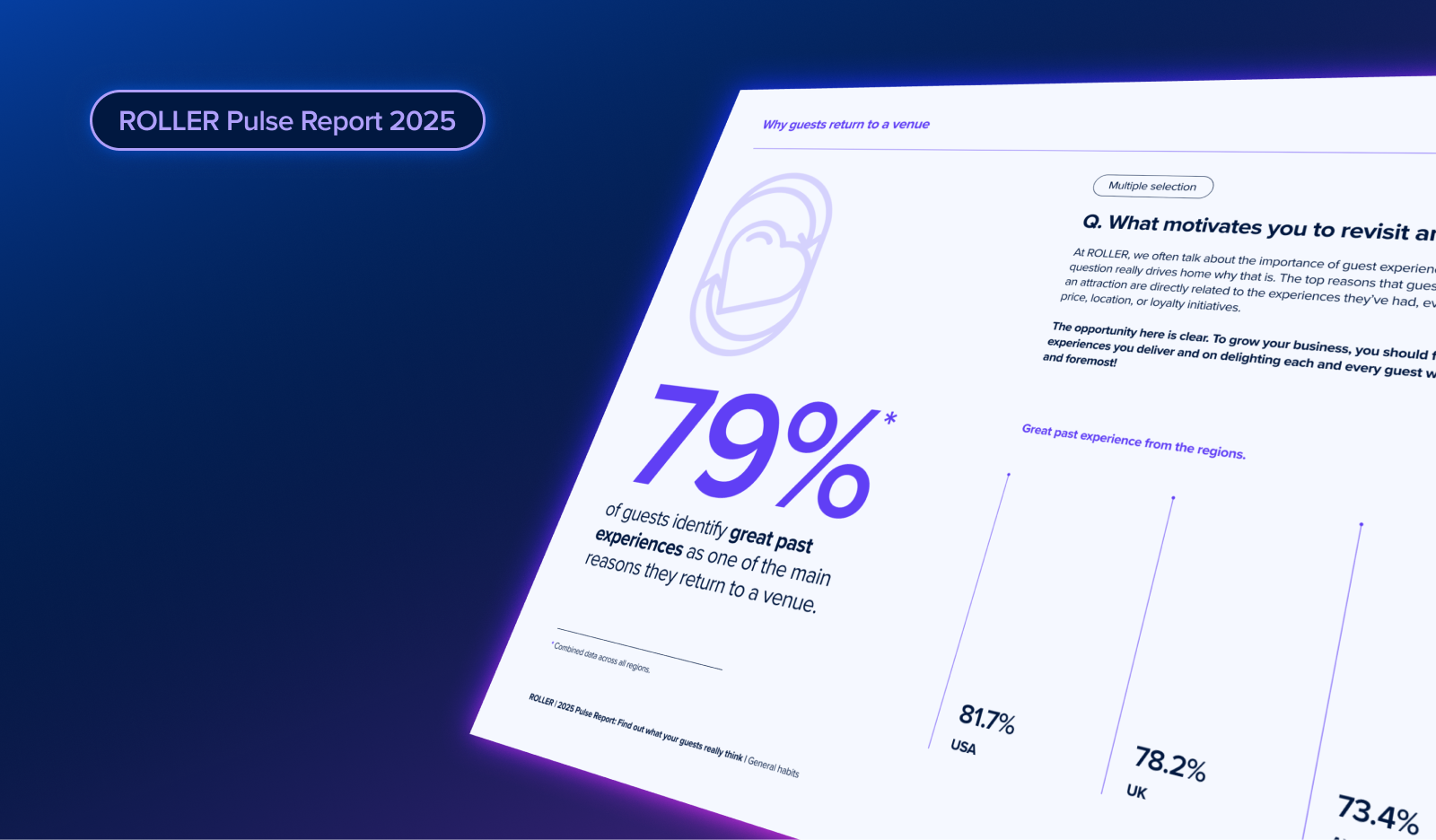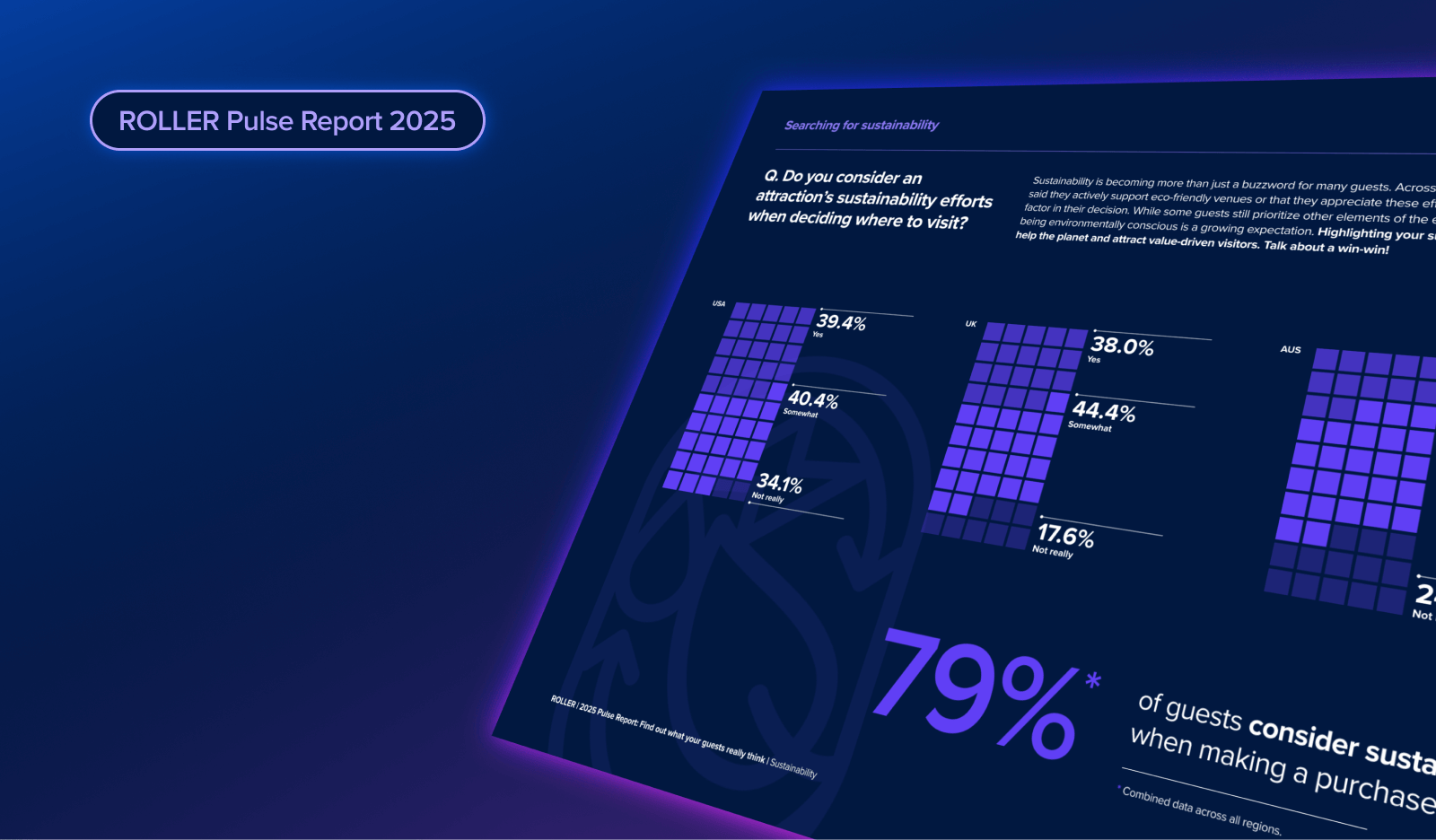Staying agile and using real-time feedback to improve the guest experience

Guest feedback comes in all different shapes and sizes, each with its own practical use and benefit. Surveys sent to guests after a visit help to measure overall satisfaction. They can pinpoint areas of the business that provide superior experience and areas lacking in comparison to the standard set by the venue. Mystery shops can identify granular details that make up the overall guest experience, such as consistency in staff greeting guests promptly, taking advantage of upsell opportunities, or if restrooms regularly require attention. Furthermore, online reviews are an excellent way to understand your attraction’s reputation from guests who have visited previously and shared their experience with others.
Each of these avenues of guest feedback is vital to the success of your business in that they provide you with the intelligence you need to make both short-term and long-term operational improvements that continue to grow over time. However, when a guest has a negative experience, the damage is already done. While effective service recovery can lead to fantastic results, it can only change the future and never the past. And unless you have a Delorean that can reach 88 miles per hour, the past cannot be changed.
However, the closest you can get to altering the space-time continuum is to act in the moment. This requires an even closer look at your operations by collecting real-time feedback, allowing you to be agile and fix problems as they come up and before they negatively impact too many guests. Doing this shows that you have your finger on the pulse of your guest experience, and you are always ready to react when you’re needed.
The question then is, how? How can you be so in-tune with your operation when there are so many balls in the air and so many complexities? It seems that it would be nearly impossible to nip every single issue in the bud before it gets out of hand, given the ever-changing landscape of a location-based attraction. No, it’s not easy, but you can get close with a dedication to continuous improvement.
Let’s use a common example of an area of guest experience that is always top of mind: cleanliness. Keeping a facility clean is not a set-it-and-forget-it exercise that you do once a day and walk away from it. It is the responsibility of every staff member, regardless of department or seniority, to maintain a high standard of cleanliness.
The first step in maintaining cleanliness with agility is anticipating service failures. Using historical data, including guest feedback and operational patterns, you can predict when and where certain areas of your facility will need attention. Do you have a stadium show that ends at 3 pm? Due to higher-than-average occupancy, the restrooms outside the stadium will probably need to be staffed between 2:45 pm and 3:30 pm. Do you have an influx of reservations or advanced bookings that are scheduled for 2:00 pm? You now have an idea that your entrance area will need to be cleaned around 2:15 pm. By using the data you have to strategize your labor allocation, you can prevent many possible service failures before they happen.
The second step is in measuring how well your anticipatory planning was executed. This may include having a managerial presence on the floor or in the areas that are predicted to be dirty, to observe in real-time how effective your labor allocation is. It can also include speaking with guests directly to identify if they observe or comment on cleanliness issues that negatively impact their visit. Additionally, incorporating survey kiosks (such as Avius) with brief, intuitive surveys allows guests to anonymously comment quickly on whatever question you ask them - such as how satisfied they are with the cleanliness of the restrooms.
Lastly, you must constantly adjust and make small tweaks to get closer and closer to optimal satisfaction. With the data, you collect in the measure phase, whether through official feedback or observations, you can feed it back into the anticipation step for the future, now armed with even more intelligence that allows you to plan even better. If the custodial staff member was scheduled too late before the show ended, or if they left too early, you now know how to improve your labor allocation for the future. Not only does the guest experience improve, but a more precise staffing allocation will optimize your labor utilization rate - where you are spending on labor exactly where you need it; no more and no less.
Of course, cleanliness is only one example of the operational factors that can be addressed in real-time. This constant cycle can always be improved and made even more efficient than the day before. Incorporating real-time feedback into your guest experience strategy balances perfectly with all other forms of guest feedback that you can use to further enhance the relationships with your guests and your business as a whole.
Related articles

.png)
What the 2025 Pulse Report Reveals About Guest Booking Behavior at Attractions

2025 Pulse Report: How Sustainability Is Shaping Guest Expectations
Enhance your guest experience
Get free education, tips and inspiration to help you run a successful venue.